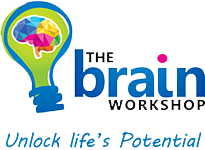Autism Awareness: What You Need to Know
On April 2, 2018, the world community will join forces to embrace the eleventh annual, UN- sanctioned, World Autism Awareness Day. In honor of spreading world knowledge and information, thousands of landmarks, buildings, and homes throughout the international community will join forces and light blue in recognition of people living with autism.
World Autism Awareness Day will kick off autism-friendly events, and educational activities throughout the month of April to increase knowledge, promote acceptance, and foster worldwide support for autistic individuals and their families.
What is autism spectrum disorder?
According to the World Health Organization (WHO), ASD refers to “a range of conditions characterised by varying degrees of impaired social behaviour, communication and language, and a narrow range of interests and activities that are both unique to the individual and carried out repetitively.”
There is not one type of autism but rather many types, caused by distinct combinations of environmental and genetic influences. The term “spectrum” refers to the wide disparity in strengths and challenges possessed by each individual living with autism.
Across the world, 1 in 160 children has autism spectrum disorder. ASDs typically begin during early childhood and can persist into adolescence and adulthood. In most cases, the circumstances of ASD are apparent within the first five years of life. Individuals with ASD often develop other medical conditions, to include depression, epilepsy, attention deficit hyperactivity disorder (ADHD), and anxiety.
What are the signs of Autism?
The initial symptoms of autism spectrum disorder vary widely in when they develop and to which degree they present. Some children with autism exhibit signs of impending challenges during their first months of life. Some children may not show signs of obvious symptoms until 24 months of age or later. In some cases, children with autism appear to develop typically until 18 to 24 months of age and then stop developing new skills, or they begin to lose previously developed skills.
Possible signs of autism in infants and toddlers include:
- By six months of age – lack of social smiles or other joyous expressions directed at people in their environment (such as parents or caregivers).
- By six months of age – limited or no direct eye contact.
- By nine months of age – limited or lack of sharing of vocal sounds, smiles and other nonverbal communications.
- By 12 months of age – no babbling, no use of hand gestures to communicate (e.g. pointing, reaching, waving, etc.), and no response to their name called.
- By 16 months of age – no words or speaking.
- By 24 months of age – lack of meaningful, two-word phrases.
- A loss of previously acquired babbling, speech or social skills.
Possible signs of autism at any age:
- Avoiding eye contact.
- Preferring to be alone rather than engage with others.
- Struggle with understanding other people’s feelings.
- Nonverbal or exhibit delayed language development.
- Echolalia (repeats words or phrases over and over).
- Becomes upset by small changes in routine and surroundings.
- Possesses highly restrictive interests.
- Repetitive behaviors (such as spinning, rocking or flapping).
- Unusual or intense reactions to smells, sounds, tastes, lights, textures, colors (or a combination).
While there are common signs for children on the autism spectrum, it’s important to note that some children without autism may exhibit some of these symptoms, and not all children with autism exhibit these symptoms.
If you are concerned your child may be on the autism spectrum, it’s essential to have your child screened by a medical professional.
Is there a cure for autism?
While there is no cure for autism spectrum disorder, there are treatments. Every individual with autism is unique. As such, treatments and supports are based on the individual. What may work for one person, may not work for another. As a result, each person’s treatment plan should follow a thorough evaluation by a medical professional.
Depending on their needs, children on the autism spectrum may receive a wide range of therapies. According to Autism Speaks, therapies include a combination of “behavior therapy, speech-language therapy, occupational therapy, social skills training and sometimes feeding therapy.” Parents, teachers, and therapists all work together to integrate their approaches across the child’s daily life.
Additionally, people living with autism also benefit from cognitive training. For individuals living with autism, cognitive training can be life-changing. When cognitive skills are reinforced, children and adults with autism think, learn, and perform mentally at school, work, and life with greater ease. While we do not diagnose or treat autism, our programs have improved the cognitive performance of clients with many diagnoses—including clients of all ages who are on the autism spectrum.
Whether you have are an adult or child living with autism, the professionals at the Brain Workshop can offer assistance. As a certified BrainRX® center, we offer the best in personalised brain-based training for individuals ages 6 to adult.
The Brain Workshop
At the Brain Workshop, we are dedicated to spreading autism awareness throughout our community. We hope you will join us as we turn our lights blue on April 2nd to help celebrate World Autism Awareness Day.
Be sure to check back for our upcoming discussion dedicated to Autism awareness and a screening of Life Animated documentary. If you’re interested in learning more about how our cognitive training can help support you or your family member living with autism, contact a member of our team to learn more.






